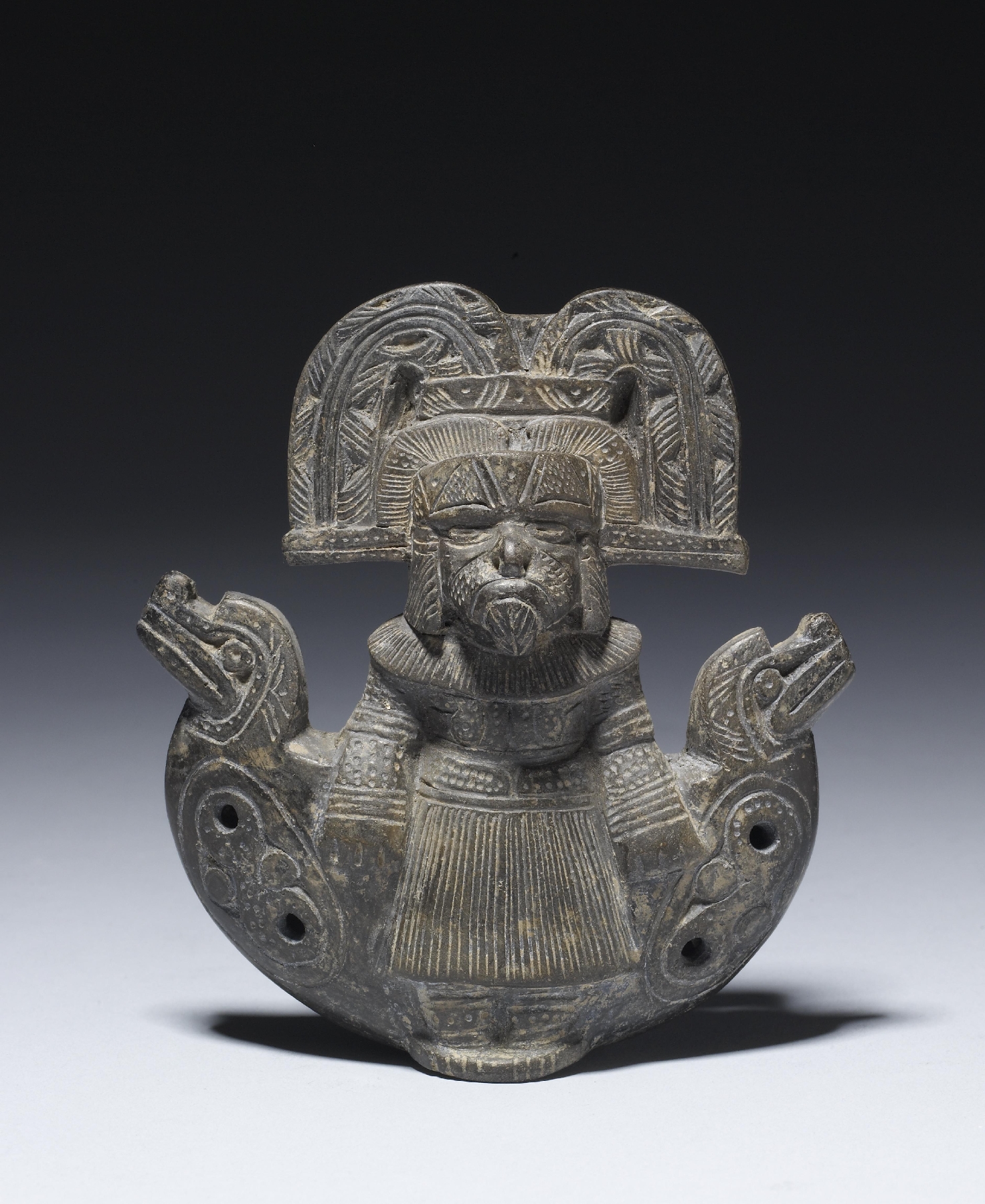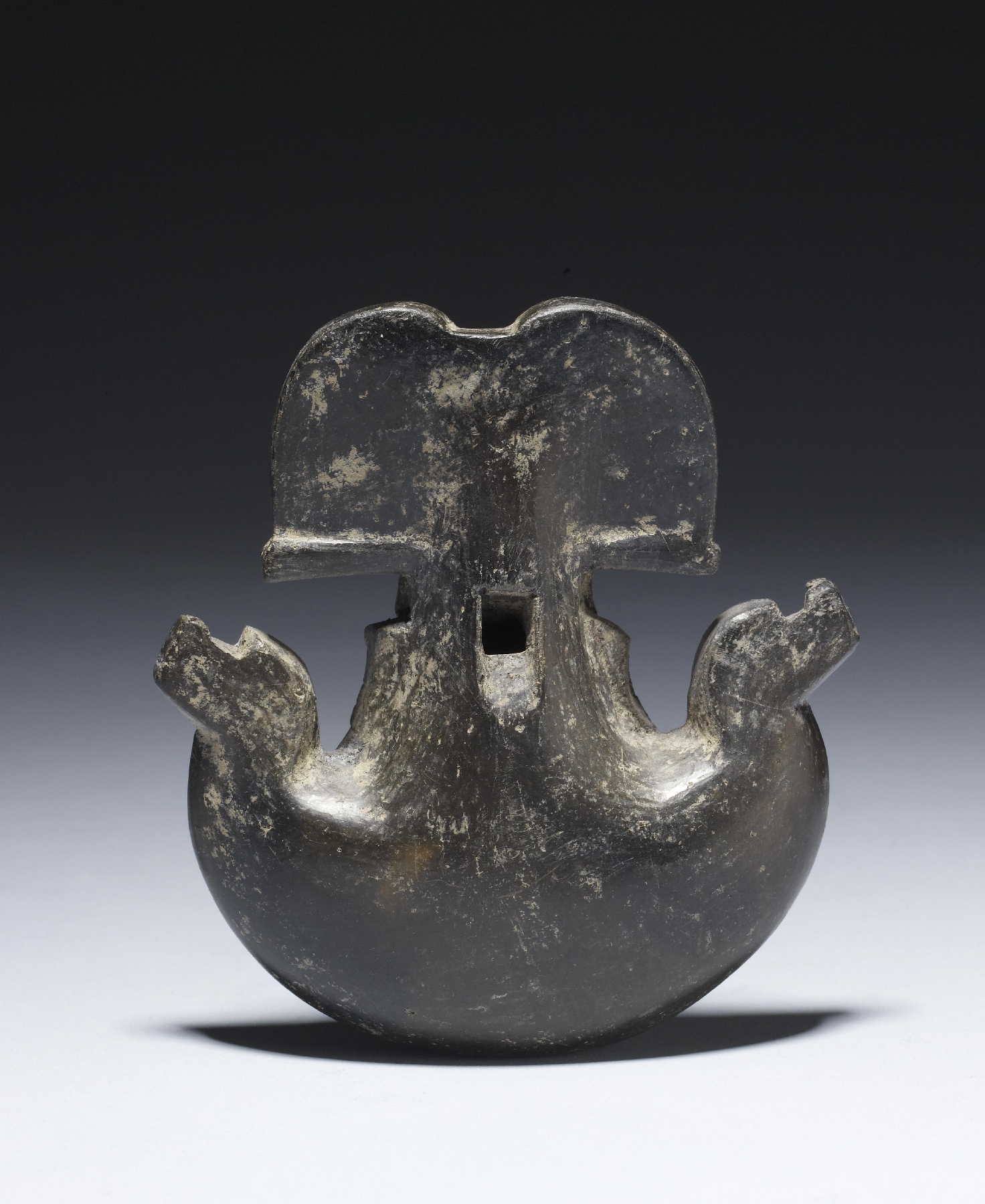Solar Effigy Ocarina
(Ancient Americas )
Among the modern descendants of the Tairona archaeological culture, the Kogi believe the sun resides in a sky-house where it sits on a bench and chews coca, sometimes being portrayed with an extruding tongue. They associate the jaguar with the sun, and view the solar "being" as both a progenitor and a devourer. Kogi religion is focused on the need to maintain a balance among all things physical and spiritual, a concept reflected in the Kogi's model of a nine-level universe. Humanity resides in the middle-the fifth level-with four benevolent levels above and four malevolent levels below. A rich and varied tradition of performance rituals was developed to help maintain the ideal community in harmony with the natural, balanced order of the universe. The playing of musical instruments was integral to these performances. Certain sounds likely held symbolic meaning, although the Spanish massacre of the region's ruling families in the sixteenth century and the rapid native population decline caused by disease and despair destroyed much of the ritual life and spiritual beliefs of the Tairona. This ocarina is a multi-toned whistle with four finger holes on the front and the mouthpiece at the top of the figure. The personage may represent an aspect of the solar deity with his characteristic protruding tongue, rayed headdress, and double-headed caiman bench. Frequently, this type of black-slipped ocarina has fugitive white pigment rubbed into the incised lines. Today among the Kogi, this color combination symbolizes the seminal power of solar-related males within the dualistic Tairona universe.
Provenance
Provenance (from the French provenir, 'to come from/forth') is the chronology of the ownership, custody, or location of a historical object. Learn more about provenance at the Walters.
Ron Messick Fine Arts, Santa Fe, New Mexico [date and mode of acquisition unknown]; John G. Bourne, 1990s, by purchase; given to Walters Art Museum, 2014.
Exhibitions
| 2012-2013 | Exploring Art of the Ancient Americas: The John Bourne Collection Gift. The Walters Art Museum, Baltimore; Frist Center for the Visual Arts, Nashville. |
Geographies
Colombia, Sierra Nevada de Santa Marta (Place of Origin)
Measurements
H: 4 1/4 x W: 4 x D: 1 1/4 in. (10.8 x 10.16 x 3.18 cm)
Credit Line
Gift of John G. Bourne, 2014
Location in Museum
Not on view
Accession Number
In libraries, galleries, museums, and archives, an accession number is a unique identifier assigned to each object in the collection.
In libraries, galleries, museums, and archives, an accession number is a unique identifier assigned to each object in the collection.
2009.20.227






